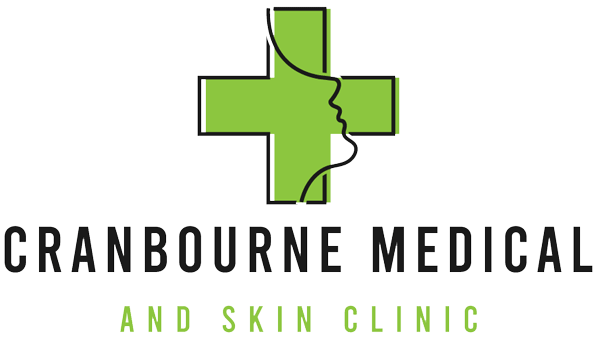Varicose Veins - Melbourne
Laser-powered help for your varicose veins
Those broken capillaries and blood vessels that you may see along your legs — sometimes called varicose veins or spider veins — don’t have to linger forever! Whether you see them on your body or on your face, a medical-grade laser can be the solution.
Our experts will use a targeted laser on those blood vessels to cause coagulation. This essentially makes the vessel nonfunctional and causes the body to break it down. Yes, you can be rid of spider veins with a laster treatment that’s quick and effective. You can even have permanent results! You’ll notice the difference in about two weeks; some patients needs a few additional treatments.
What should I do to prepare for varicose veins treatment?
Before:
- You’ll want to avoid sun exposure for the two weeks leading up to the appointment. Do not use fake tans/solariums during that time, either.
- Do not use active skincare products (example: retinol or scrubs) for three days before your appointment.
After:
- Avoid being in the sun for two weeks after your treatment. This should be combined with regular sunscreen usage.
- You can apply “laser aid” twice each day for five days
Varicose Veins & Spider Veins FAQ
What is the difference between Varicose veins & spider veins?
Veins transport deoxygenated blood from the body back to our heart. Blood is collected in superficial veins, just below the skin surface, and carried to deeper veins that run within our calf muscles. Our calves’ muscular activity helps to pump blood away from the heart against the push of gravity. Blood is kept from travelling backward by one-way valves within the veins.
Blood will pool in the superficial veins if these valves fail to close. Over time, these veins expand with blood (they become ‘varicose’). Varicose veins are blue, twisted, and knobby in appearance.
Spider veins are similar to varicose veins, but they are smaller and closer to the skin’s surface. They are frequently red or blue and resemble tree branches or spider webs. They may be prevalent on one’s legs or face. They might cover a minor area or a big portion.
The most common vein problems are varicose veins, which can be treated in two primary ways. Only the larger varicose veins are usually operated on, whereas sclerotherapy may help with smaller ones.
Varicose and spider veins are not simply cosmetic problems. Treatment is necessary because these conditions can lead to serious health issues if left untreated. Varicose vein disease may cause various health issues, including blood clots, venous eczema, skin breakdown, ulceration, and skin cancer.
What the Causes of varicose veins and spider veins?
Varicose veins and spider veins are two types of vein disease. Although the origins of varicose and spider veins are unknown, they appear to run in families in many instances. Women seem to be more prone than males to have varicose or spider veins. Changes in estrogen levels in a woman’s blood may contribute to the development of varicose veins. Hormonal changes during puberty, pregnancy, nursing, and menopause are all examples of this.
What Factors raise your risk of developing varicose veins?
- Standing or sitting for long periods of time.
- Stay immobile for a long time, such as being confined to bed.
- No exercise or lack of exercise
- Obesity is another factor.
What are the symptoms of varicose veins and spider veins?
Some women never experience any symptoms with varicose or spider veins. Your legs may feel very tired, heavy, or painful if you have symptoms.
The following symptoms may be more prevalent with varicose veins:
- Aching in the legs
- Eczema, psoriasis, and other skin rashes
- Small, reddish, or brownish stains on the skin’s surface, resulting from capillaries rupturing.
- Skin ulcers
- A blood clot (thrombophlebitis) can form in the veins.
How to prevent varicose veins and spider veins?
Varicose and spider veins are things you can’t avoid, even if they frequently happen in your family or while you’re pregnant. Other factors over which you have no control, such as getting older, can also contribute to varicose and spider veins.
There are lots of stuff that you can do at home to help you become healthier, such as exercise and reducing weight, which can help prevent new varicose veins or spider veins from developing. These methods might also aid your legs in feeling better by reducing pain and discomfort.
What is Sclerotherapy for varicose and spider veins treatment?
Varicose veins and spider veins can be treated with sclerotherapy, which is the treatment of varicose and spider veins with irritant chemicals (sclerosants). The irritating chemicals cause the vein to spasm and collapse, resulting in a sealed vein that no longer transports blood.
Sclerotherapy is effective in treating varicose veins. It takes time for varicose vein sclerotherapy to work, although the process is often quickened by wearing a compression stocking on your leg. Smaller veins require compression for three to six days, whereas bigger ones need around six weeks of compression.
What is the Outlook for individuals who have varicose veins?
Varicose veins tend to become more prominent with time. This is true even if you make the required lifestyle modifications to manage them and lessen your discomfort. While they are unattractive, they rarely cause any long-term medical issues.
In certain circumstances, varicose veins may cause ulcers, rashes, blood clots, or persistent inflammation. Veins can burst if you have a severe case.
If you experience any of the symptoms, you should see your doctor. They may then advise doing something more aggressive, such as surgery or other treatments, depending on the situation.
Where to get help for treatment of varicose and spider veins?
- Your doctor
- Your surgeon
- Dermatologist
